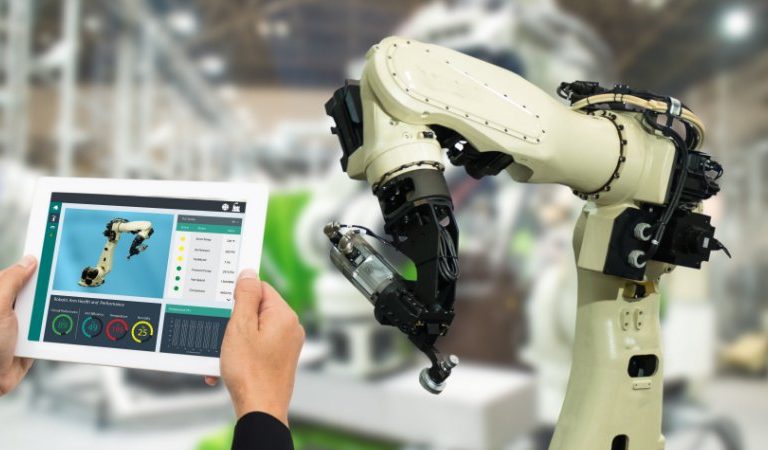3 Key trends to look out for in the PCB interconnect market
Wendy Jane Preston, Technical Marketing Engineer at Harwin, looks at the key trends that are currently affecting the PCB interconnect market and what the industry needs to do to tackle the resulting technical, commercial and logistical challenges that lie ahead.
Too often media attention within the electronics business is focused almost totally on the semiconductor technology involved and the issues that have to be dealt with in that respect. However, few recognise that exactly the same dynamics are at play elsewhere – in reality they have just as serious implications for connector manufacturers too, presenting difficult obstacles for them to overcome.

Densely populated PCBs
An increasing density of electronic systems is witnessed across a broad spectrum of applications. In some cases this is down to greater amounts of electronics content being implemented into such systems, for others it is due to the downsizing of designs, but frequently it is both of these at once.

Printed Circuit Board with many electrical components.
For instance, the development of systems for use in UAVs, as well as in an automotive and space context need to fit all the supporting electronics into highly compact enclosures, that leave little room for the connectivity aspect to be covered. The rising number of semiconductors utilised (and the heatsinking that must accompany them) means there is very little area available on the PCB. Furthermore, those PCBs will be packed closer together and although OEMs want PCB connectors with low profiles (and reduced overall dimensions in general) from their suppliers, they cannot accept any sort of downgrading in the operational performance. The connectors still need to be able to cope with elevated current and exhibit tighter tolerances.
Take our Gecko family for example, the 1.25mm pitch connectors are really where downsizing has been put into practice. These units meets the industry’s need for higher density PCB interconnects (with each contact able to support 2A currents), while being both lighter and more cost effective than rival solutions (thanks to their plastic housings). Their robust construction means that they can cope with high degrees of shock and vibration, as well as extreme temperatures. Screw-based connection options make them more reliable in challenging application environments compared to conventional latch-based solutions. As well as automotive and space applications, these products are also proving highly popular in defence and robotics sectors.
Automation
Industrial automation is another good example of some of the pressures involved. With the advent of Industry 4.0, the level of complexity going into systems developed for such purposes is ramping up rapidly. Nevertheless there is still a need to adhere to space constraints, so that they don’t hinder the smooth running of the facility into which they have been deployed. Connectors must occupy minimal space, but at the same time there is an expectation that there won’t be any compromises with regard to reliability, as the costs associated with downtime are too great. If a factory production line is halted for several hours due to the failure of an electrical connection it could result in many thousands of Euros being lost.
That’s where the development of our Archer Kontrol board-to-board connectors presents design engineers with highly robust, as well as flexible, interconnect solutions that address a broad spectrum of different industrial tasks. Covering 12 to 80 contact pin formats, these compact 1.27mm pitch connectors have a current rating of 1.2A per contact. The space-saving design can be supplied in either horizontal or vertical orientations which are configured for surface mounting, thereby facilitating automated assembly processes. Furthermore, the polarization of the shrouded housing assists in cases where blind mating is required, and can tolerate a significant amount of misalignment. Board-to-board heights range from 8 to 20mm, with co-planar options also available.

Design Considerations
Another concern for connector suppliers is that when it comes to designing the connectivity element into a system, engineering teams don’t always think far enough ahead. Too often this part of the development project isn’t judged to be a priority and as a result is left to the last minute, and then there is insufficient space left available. This puts huge pressure on the connector supplier to offer more compact solutions that still adhere to the same performance characteristics. On top of this OEMs still want to keep the total bill-of-materials costs low and also make assembly as simple as possible.
This is where the Harwin Field Application Engineers step in, working with customers on their designs to help offer expertise, experience and guidance for design considerations on the PCB. It may seem obvious, but by listening to our customers and getting insight into what they need, we are able to continually develop innovative products that help drive innovation in the market. For example, Harwin’s connectors are used by many of the leading motorsport teams around the world. The demanding nature of this sort of application relies on constant dialogue between our engineering team and the customer – as they look to reduce weight, save space and keep on pushing the performance envelope.

This philosophy is maintained throughout the company’s everyday processes and the regular upgrade of our manufacturing facilities to ensure that we have the cutting-edge equipment needed to produce next generation connectivity solutions.
Uh oh, it looks like you are using an outdated browser version.
Some functions may not work as expected on Harwin.com in your current browser. For the best experience, more security and speed, we recommend updating your browser to the latest version.
(if you are using Internet Explorer, we recommend switching to an alternative browser.)
Still having issue? Contact [email protected] for help.



